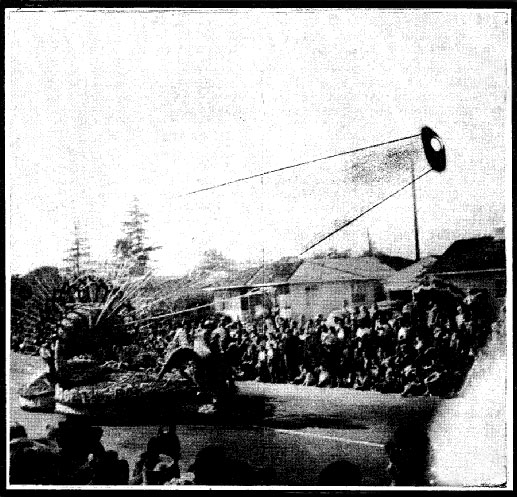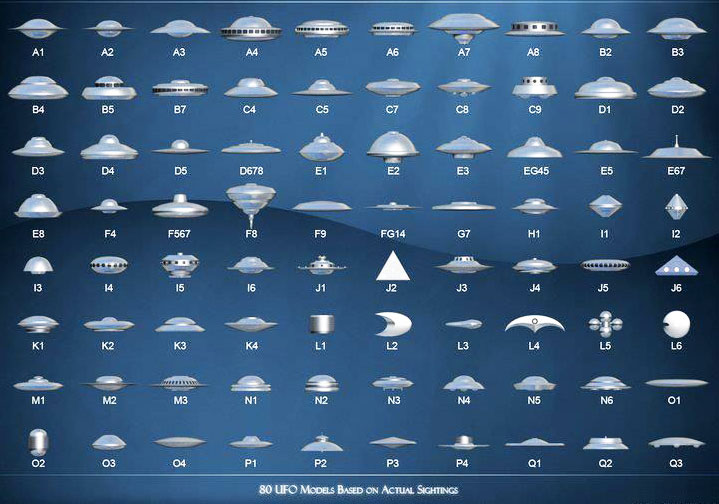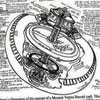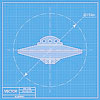Remote Controlled Flying Disks
 by John W. Dean
by John W. Dean
I think that the first I ever heard or read of remote controlled disks was when they were seen frequently during World War 2 and were called “foo-fighters”. It was only logical that they should be considered dangerous. Not much was told about their size that could be relied upon—reports ranged from eight inches to ten feet in diameter. Adamski, aboard a mother ship, said he saw one sent out and then saw it return, but had no idea as to its operation nor did he learn what message it brought back.
When Howard Menger spoke in Chicago, he told us about one, and I asked him if he saw the “record”, assuming that it would be round like a common phonograph record and, when played, would repeat, in words, any conversation it had heard. He said it was flat and square or rectangular (film?) and that he did not hear it “played”.
From various sources we learned that if one “went bad” and fell to the ground the sender would focus a disintegrating ray on it until it melted and evaporated. We were warned not to touch one under any circumstances.
During the war they were often seen by pilots and properly feared as weapons of war though they did not seem to be bent on mischief. One story came back from Europe of a U.S. plane flying along with a front side window open. A “foo-fighter” was seen by the crew straight ahead, coming directly toward them and they expected a collision. Instead, it stopped and went over and under and around the plane and then came in at the window and down the aisle of the troop ship. All of the brave soldiers tried to crawl under the seats as it floated above them. No one thought to close the window and capture it—quite the opposite! If that story was true, I would certainly like to know what impressions the disk took back to some space ship.
An early report from the Philadelphia Sunday Express of October 1, 1951, via Desmond Leslie: “Two Philadelphia policemen saw a large shiny spherical object float down and land in a field. They examined it with their flashlights and one of them felt it.
“’I touched it,’ he said, ‘and it just dissolved, leaving my fingers sticky. There was no smell, no anything. Just stickiness.’ During the next twenty minutes the thing became less real; it did not evaporate or melt, it just disappeared. Not a dent in the ground to mark the place; not even damp grass. It just wasn’t there any more. Like ectoplasm, it appeared and disappeared, as if it was made of temporary matter.”
That may have been the start of the belief that all space ships were made of “solidified ectoplasm”; whatever that would be. My dictionary says of ectoplasm–”2. Spiritualism: The emanation from a medium which apparently produces motion in objects at a distance without physical contact.” It would be interesting to learn how to solidify that. I think the disks are made of much the same metals as the ships.
There were many reports of such disks falling, even in people’s back yards, where they were seen in the air and on the ground. We were repeatedly warned by spacemen not to touch them as they were hot when they were being destroyed by a disintegrating ray from a mother ship. In one case, some boys covered a fallen disk with a blanket and went for adult help and advice. When they returned there was nothing left, so they were completely discredited.
Here is a direct example from the Venusian whom Adamski called Zuhl in his second book, page 155: “When a disk goes out of control, a ray is projected to disintegrate it. This accounts for some of the mysterious explosions that take place in your skies. On the other hand, if it happens near the ground where it might cause damage, it is allowed to land and a milder charge is sent into it. This causes the metal to disintegrate in slow stages. First it softens, then turns into a kind of jelly, then a liquid, and finally it enters into a free state as gases. There is no danger if the disk be touched while disintegrating. The only harm that could come would be to touch it at the moment when the ray is applied.”
The image below shows a photograph of a remote disk taken by Carl Firmin, who snapped it while he was taking a picture of a float in the Rose Parade in Pasadena, January 1, 1963. This was shown on the cover of Proceedings Magazine soon afterward. Some of the disks are able to shine brightly when desired; some seem able to make themselves invisible.
 During 1967 Renaud sent me many floor plans of assorted Alliance space ships and several of them showed such disks in several sizes, set up in readiness to be sent out to observe or explore. I believe the following is the best explanation of them we shall ever see:
During 1967 Renaud sent me many floor plans of assorted Alliance space ships and several of them showed such disks in several sizes, set up in readiness to be sent out to observe or explore. I believe the following is the best explanation of them we shall ever see:
“The small disks are ordinarily equipped with these instruments–gravitometer, magnetometer, air density gauge, radiation censors, light and sound pickups, and an air-purity analyzer that screen incoming air and spectroscopically analyzes the percentages and types of impurities such as dust, fallout, gases, etc. These various types of information are converted to electronic signals which multiply an ultra-frequency FM carrier on as many as 15 channels simultaneously on the small disks, and up to 50 channels on the larger units. This telemetering signal, which may be either a microwave radio or a light-frequency (via laser), is then relayed to the carrier ship or the scout which dispatched it.
“In the ship, the signal is amplified to a useable level, discriminated to extract the modulations from the carrier signal, and these information signals are then relayed to a multi-channel magnetic-tape recorder, which uses a high density tape and can place as many as a hundred channels simultaneously on an inch-wide tape. Simultaneously, these incoming data are routed to various display panels, where they appear as scope traces, oscillograph recordings, numerical readouts, etc.
“Other electronic devices which may be added to a small scout (unmanned) as needed, include: television cameras, radio frequency monitors, (up to ten frequencies at once); moisture percentage analyzers; inductive pickups for listening to telephone conversations by hovering near the wires; power monitors for clamping onto transmission lines; brilliant lights; disruptors for offense and defense; radar-negative screens; force screens to shield from destructive powers.
“All unmanned units are further equipped with auto-destruct and remote destruct devices literally to blast them to vapor if they should fail. The remote destructive device is from the controlling ship, which monitors the little disk’s performance upon its scopes, and can detect improper action.
 “The disks are controlled by radio or laser from the parent ship, either manually or by recorded tape control. Or it may be switched over to computer control for intricate maneuvers and those which require faster responses than a man can provide. Ordinarily this type of disk is flown by computers, according to a basic flight plan fed into it by the operators. This, in effect, gives it a set mission with room for sudden changes.
“The disks are controlled by radio or laser from the parent ship, either manually or by recorded tape control. Or it may be switched over to computer control for intricate maneuvers and those which require faster responses than a man can provide. Ordinarily this type of disk is flown by computers, according to a basic flight plan fed into it by the operators. This, in effect, gives it a set mission with room for sudden changes.
“They are propelled and suspended by either magnetic or gravitic power. The magnetic vortex analyzers, a common type of disk—serves to map and to warn of those destructive whirlpools of magnetic energy that come and go at a moment’s notice—are always gravitic in power. They are sent ahead of all carriers and many scouts to warn of conditions ahead. If they would signal a sudden vortex in a ship’s flight plan, the ship’s computer will either steer around it or stop its forward flight instantly, depending on the intensity and size of the vortex.
“Once stopped, the computer will then direct the disks to map the extremities of the vortex and will then compute a flight plan around it. Or as an alternative, it will signal the control room that it has taken such emergency procedures and may switch the ship to manual control at the pilot’s discretion. If he takes it, the computer resumes its flight planning, still relaying its decisions to the readouts.
“There are many potential variations, because of the incredible flexibility of man-machine coordination of such high level. In fact, carriers have been known to maneuver through such obstacles as the asteroid belt, or magnetic storms, without the pilot lifting a finger. This is the degree of sophistication of their computers and it gives food for thought.
“That is, in essence, the way the little disks operate and serve the ship.”
Excerpt from Flying Saucers Close Up
Posted in Other Topics, UFOswith comments disabled.





